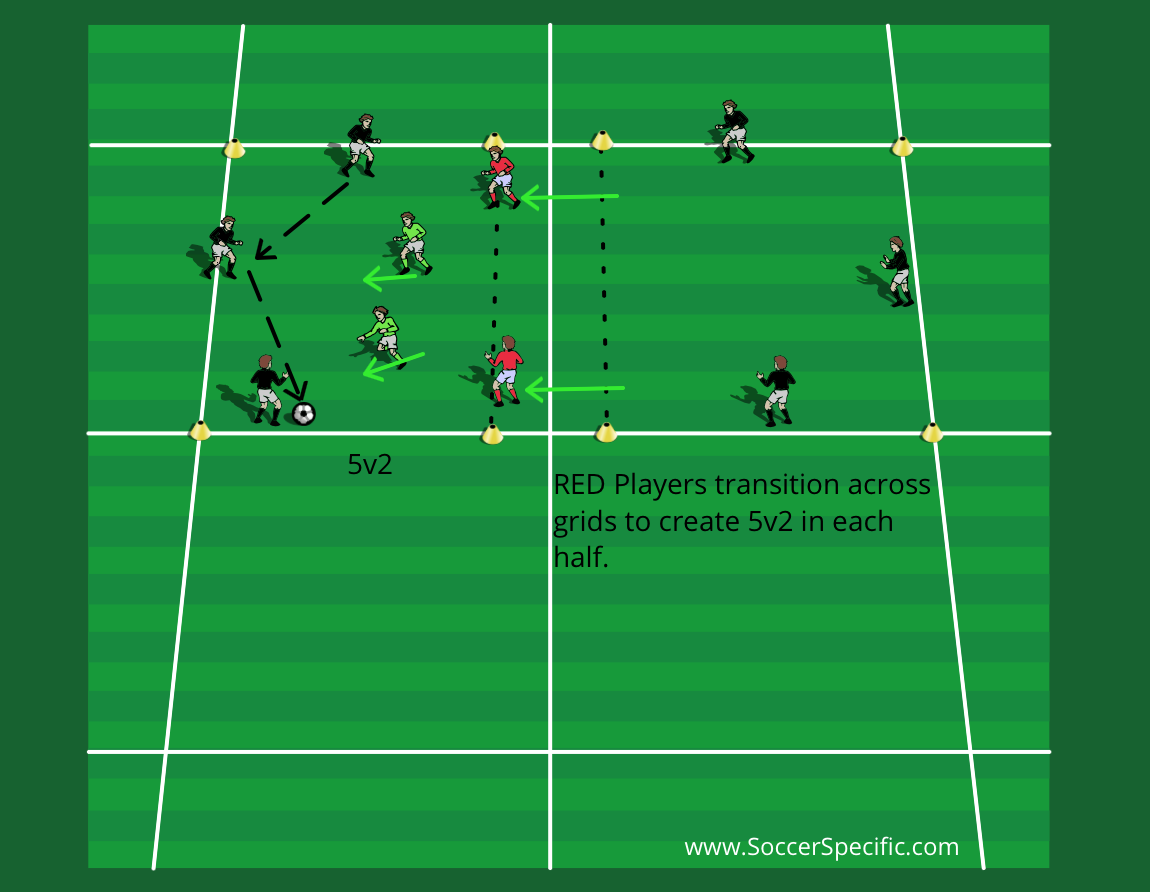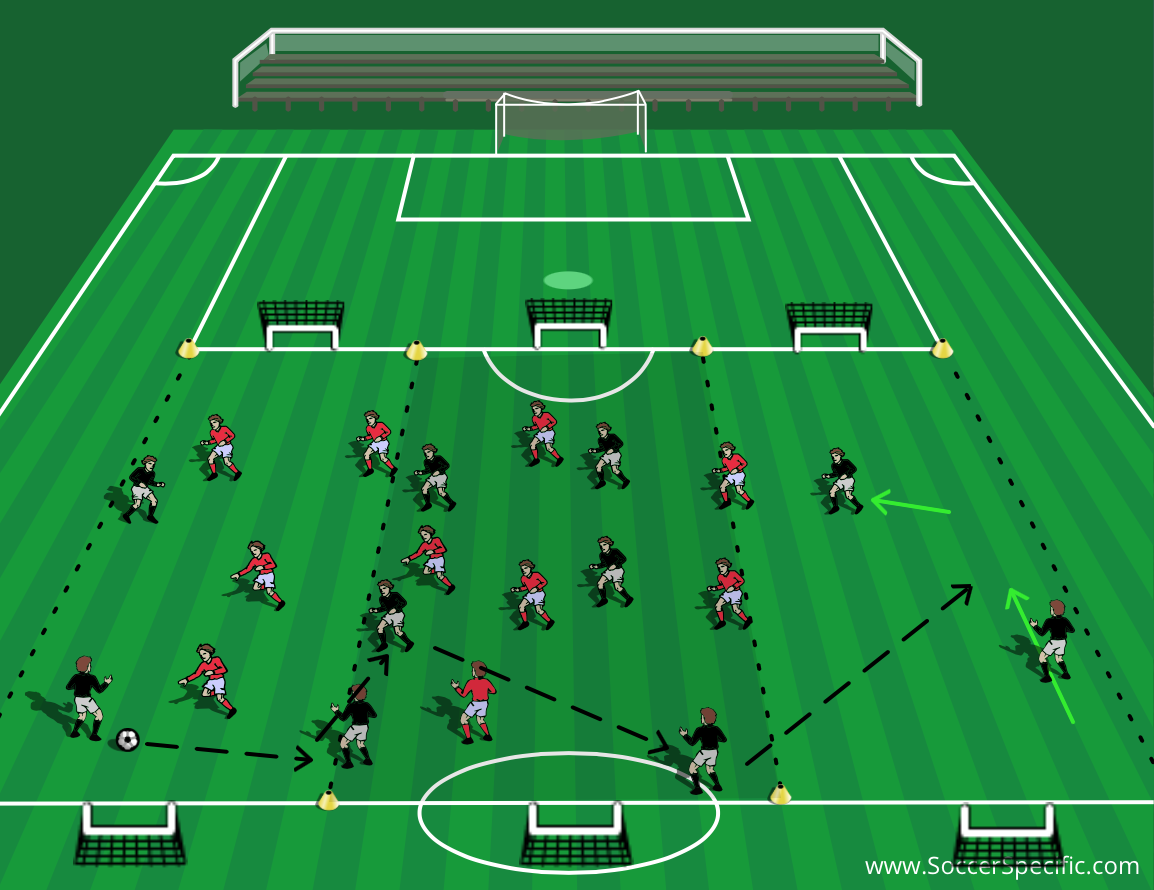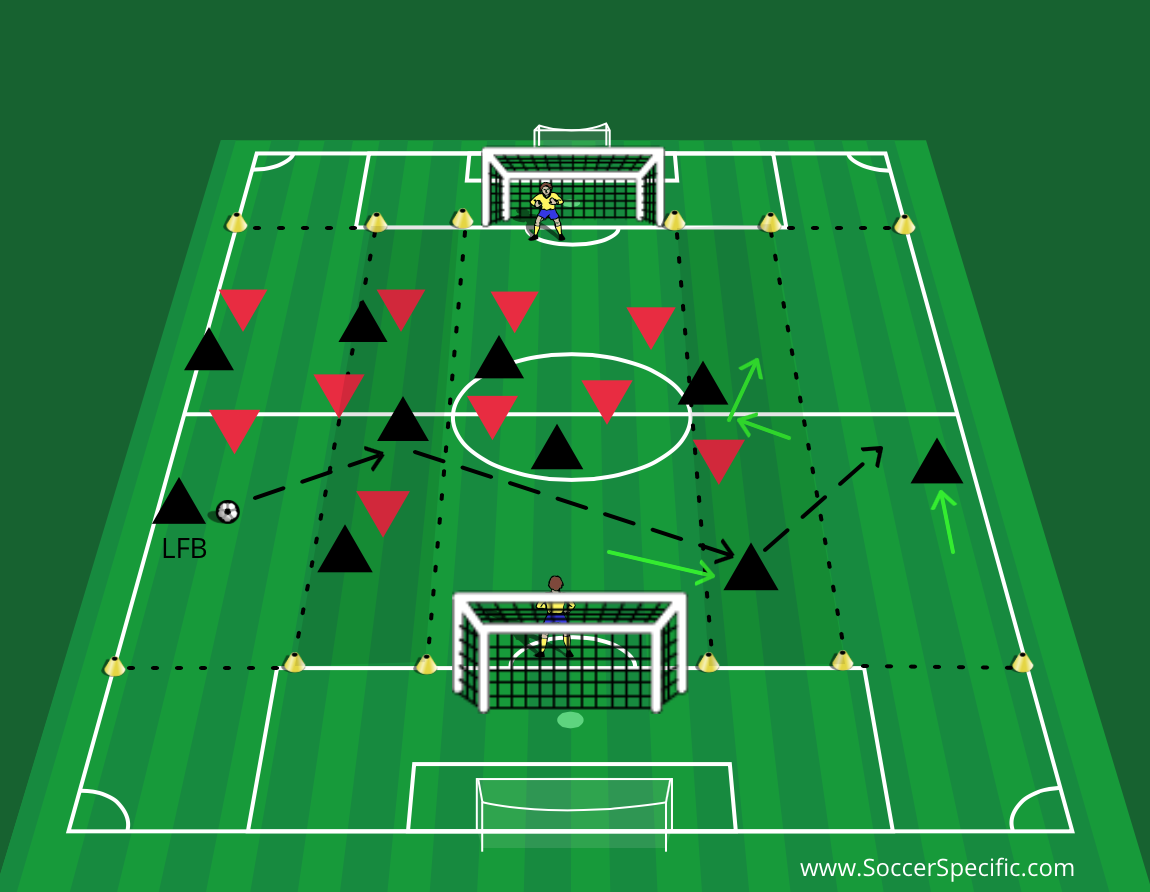Switching play can create opportunities to effectively attack your opponent – to create chances and score goals! A key component is to create the scenario whereby a ‘switch’ is possible – can you draw the opponent to one side of the pitch, can you maintain possession long enough to attract the opponent towards the ball? Can you maintain a structure within your team to allow 1 or 2 players to remain in wide positions?
Effective Switches of Play emphasizes switching play quickly while in possession. The idea is to create good habits whereby players are aware of switching opportunities and how to exploit them.
Isolating opponents in wide areas after a switch of play can result in positive opportunities to attack! Wide players / Wingers can find themselves in 1v1 situations or even 2v1 situations – as defenders move to apply pressure this can also have a positive knock-on effect where space can open in central areas of the pitch for midfielders to exploit.
Effective Switches of Play
1. Possession / Passing with Switch of Play
Setup:
Group of 10 Players. 10 Players (RED) designated as ‘Floating’ players who can transition across grids. 2 Players begin the activity as Defenders (Green in Diagram).

Instructions:
Players maintain possession in a 5v2 setup; on ball switching to opposite grid, the ‘Floating’ players transition as well as the Defenders to maintain the 5v2.
Phase 1: Players must complete 8 passes before attempting to switch to opposite grid
Phase 2: Only Floating Players may switch ball – this encourages quick receiving on a half-turn and switch of play.
Phase 3: Floating players can turn and switch OR lay the ball back to other Floater to switch. Change Defenders each 1 min OR on any error / loss of possession.
Coaching Points:
- Quick ball circulation and movement
- Develop an understanding and awareness of switching play quickly to opposite side of playing area
- Transitions across to offer support
2. Possession – Developing Switch of Play
Setup:
10v10 organised across 3 zones as shown. Mini-goals placed at end of each zone.

Instructions:
Defending team is encouraged to compress / compact into 2 zones at any given time. Possession team encouraged to maintain at least 1 player in a wide position on weak-side zone (farthest zone from ball).
Teams maintain possession through quick ball circulation and movement and attempt to score in their opponents goal(s). On any switch to opposite zone that results in scoring = 3 goals.
6min games.
Coaching Points:
- Quick ball circulation and movement
- Develop an understanding and awareness of switching play quickly to opposite side of playing area
- Identify that space and numerical advantage can occur on a quick switch of play
- On any switch – be direct – attack the space / opponent
- Transitions across to offer support
3. Tactical Game – Developing Switch of Play
Setup:
11v11 organised across 5 vertical zones as shown. Full-sized goals placed on 18-yard boxes as shown.

Instructions:
Defending team is encouraged to compress / compact into 3 vertical zones at any given time. Possession team encouraged to maintain at least 1 player in a wide position on weak-side zone (farthest zone from ball). On switching play – players should attempt to play across a minimum of 2 zones to force the opponent to travel over greater distances to defend. Teams maintain possession through quick ball circulation and movement and attempt to score in their opponents goal. Possession team is encouraged to pass / maintain possession / probe on one side of the pitch to draw the opponent to one side – this creates an opportunity for a quick switch to take place.
Switching can be with (1) quick passes across the grids or (2) Direct ball to wide player; both options effective.
8-10min games.
Coaching Points:
- Quick ball circulation and movement
- Develop an understanding and awareness of switching play quickly to opposite side of playing area
- Identify that space and numerical advantage can occur on a quick switch of play
- On any switch – be direct – attack the space / opponent
- Transitions across to offer support
